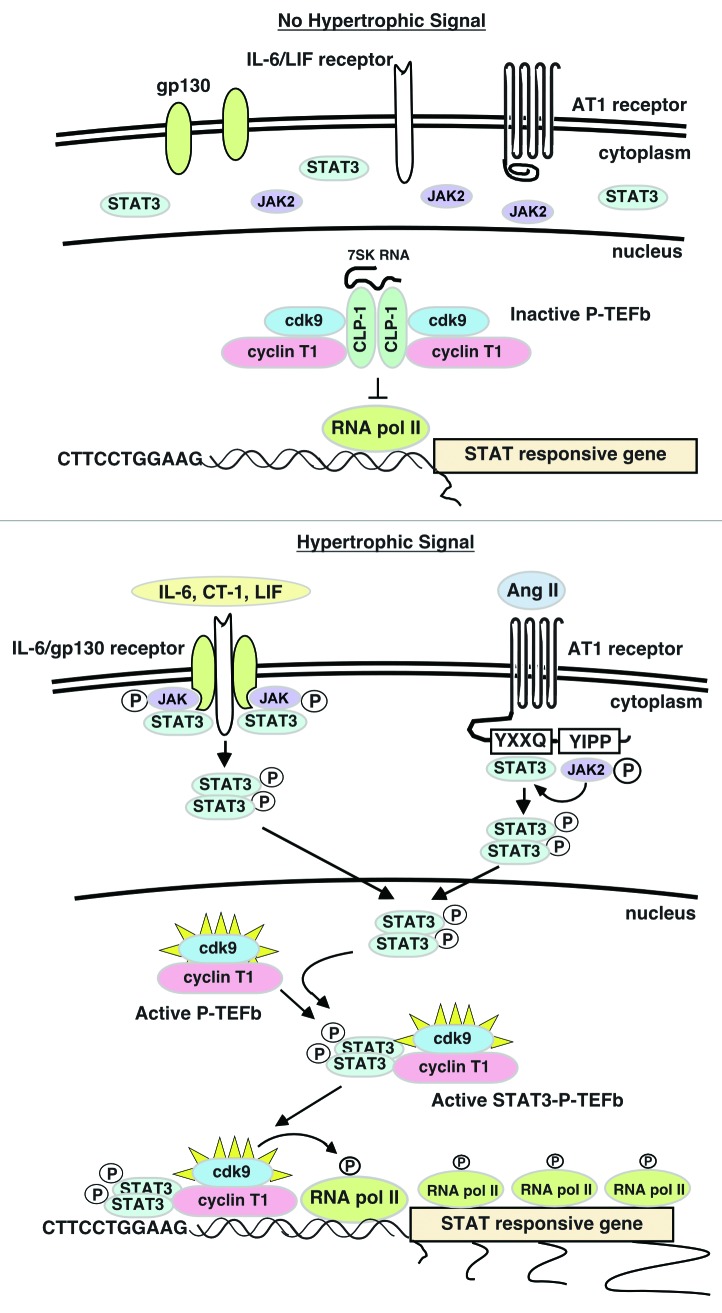Figure 4. Interaction between the JAK-STAT pathway and the CLP-1-P-TEFb transcriptional regulatory mechanism. In the absence of hypertrophic signals, STAT3 remains cytoplasmic and CLP-1 inhibits P-TEFb. This keeps RNA pol II in the initiation state and STAT-responsive genes untranscribed. In the presence of hypertrophic signals, STAT3 is activated and STAT3 dimers are mobilized to the nucleus where they bind to cdk9-cyclin T1 complexes (active P-TEFb) and prevent binding by the CLP-1 repressor. The STAT3-P-TEFb complex is then recruited to STAT3 target genes via binding to specific STAT3 binding sites within the proximal promoter of these genes. Recruitment of chromatin modifiers by STAT3 (not shown) opens chromatin to access by RNA pol II, which upon phosphorylation by active cdk9 kinase resumes synthesis of paused, nascent RNA transcripts.

An official website of the United States government
Here's how you know
Official websites use .gov
A
.gov website belongs to an official
government organization in the United States.
Secure .gov websites use HTTPS
A lock (
) or https:// means you've safely
connected to the .gov website. Share sensitive
information only on official, secure websites.
